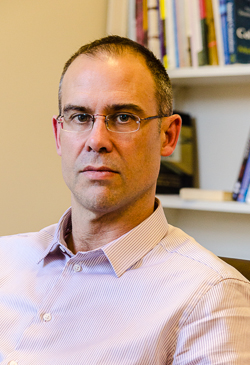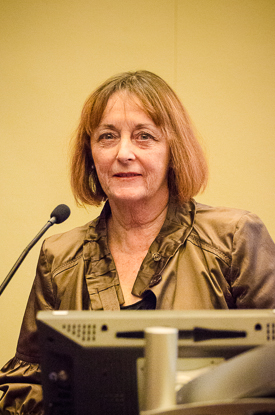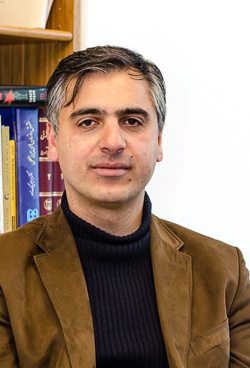The Limits of Truth Telling: Victim-Centrism in Canada’s Truth and Reconciliation Commission on Indian Residential Schools
Professor Ronald Niezen, Katharine A. Pearson Chair in Civil Society and Public Policy, Faculties of Law and of Arts
Published in Allegra – Virtual Lab of Legal Anthropology – January 27, 2015
 Truth commissions can be seen, not only as venues for addressing the worst abuses of states in a search for justice, but as institutions that produce knowledge, oriented toward shaping opinion on a wide scale.
Truth commissions can be seen, not only as venues for addressing the worst abuses of states in a search for justice, but as institutions that produce knowledge, oriented toward shaping opinion on a wide scale.
The public orientation of the commission is shaped in important, but largely unrecognized ways, by the laws that bring the commissions into being, the powers they possess, and the approach they take to the “victims” or “survivors” of the abuse of states.
The influence of the law can be seen in the preferences and absences of Commission proceedings; this includes the templates that shape survivor testimony, and conditions of moral affirmation and insecurity that influence the presence or absence of those who give testimony and how their statements are received.
These basic observations on the connection between the mandates of truth commissions and their production of knowledge are particularly salient in Canada’s ongoing Truth and Reconciliation Commission on Indian residential schools. The Commission began its work in 2009 with little public awareness or acknowledgment of the history of the human rights abuses in question: the institutional effort to assimilate “Indians” into mainstream Canadian society through a large scale effort of church-operated residential schools that removed children from their communities and families.
Spanning a period of approximately one hundred years, from the late nineteenth century to the late twentieth century, the federal government of Canada put into effect a policy of Indian education through residential schools, based largely on an already established U.S. model of Indian boarding schools. The main distinguishing quality of Canada’s residential school program was that it involved collaboration between the federal government and a variety of churches: Anglican, Catholic (especially the Oblates of Mary Immaculate), Presbyterian, and United. By the time the last schools closed in the mid-1990s, approximately 140 Inddian residential schools housing approximately 150,000 children had been in operation. There are some 86,000 people alive today who once spent time as a child in an Indian residential school. [Keep reading…]
A modest proposal for respecting physicians’ freedom of conscience
Professor Margaret Somerville, Samuel Gale Chair in Law
National Post – January 23, 2015
 The Ontario College of Physicians and Surgeons is consulting on whether patients’ right of access to certain procedures, such as abortion, should trump the rights of those physicians who refuse, for reasons of conscience, to provide them.
The Ontario College of Physicians and Surgeons is consulting on whether patients’ right of access to certain procedures, such as abortion, should trump the rights of those physicians who refuse, for reasons of conscience, to provide them.
Dr. Marc Gabel, a College official, chairs the working group looking at this issue, which is drafting a new policy on “Professional Obligations and Human Rights.”
Dr. Gabel has been reported as saying that “physicians unwilling to provide or facilitate abortion for reasons of conscience should not be family physicians” and it seems wants the College to approve that stance.
Sean Murphy, of the Protection of Conscience Project, argues that “if it does, ethical cleansing of Ontario’s medical profession will begin this year, ridding it of practitioners unwilling to do what they believe to be wrong.”
Freedom of conscience, like the other fundamental freedoms enshrined in the Canadian Charter of Rights and Freedoms, is a fundamental pillar of democracy. So how could breaching this right be, as Dr Gabel claims, “required by professional practice and human rights legislation”? The best answer is that it is not. In fact, it would be a perversion of the norms and applications of both professional practice requirements and human rights legislation to interpret them as establishing such a requirement. So why is this argument being made? [Keep reading…]
The Power of the Feminine Self: Manhood Liberated from Violence Against Women
Professor Payam Akhavan
Huffington World Post – 18 January 2015
 $86 American dollars. Somewhere near Mosul in Iraq, a Yazidi woman is sold into “marriage” at that price. That is, if she is between 20 and 30 years of age. If she is 10 to 20 years of age, the price is higher, at $129 dollars. The highest price of $172 is reserved for girls up to the age of nine. These Yazidi women were abducted by Daesh from Mount Sinjar a few months ago as “spoils of war.” Fourteen-year-old Narin was given as a “gift” to Abu Ahmed, a 50-year-old commander in Fallujah. Using her wits, she escaped to Baghdad from where she was reunited with her family near Erbil. Now she worries for her captive sister-in-law that she believes is still alive, and dreams that one day they will be reunited again.
$86 American dollars. Somewhere near Mosul in Iraq, a Yazidi woman is sold into “marriage” at that price. That is, if she is between 20 and 30 years of age. If she is 10 to 20 years of age, the price is higher, at $129 dollars. The highest price of $172 is reserved for girls up to the age of nine. These Yazidi women were abducted by Daesh from Mount Sinjar a few months ago as “spoils of war.” Fourteen-year-old Narin was given as a “gift” to Abu Ahmed, a 50-year-old commander in Fallujah. Using her wits, she escaped to Baghdad from where she was reunited with her family near Erbil. Now she worries for her captive sister-in-law that she believes is still alive, and dreams that one day they will be reunited again.
Not far away, in Syria, Alma Abdulrahman’s nightmare began in a detention centre in Damascus on 29 April 2011. She was accused of being an anti-Assad rebel, brutally beaten, and repeatedly raped by soldiers, who taunted her with cries of “here is the freedom that you wanted.” The women, she explains, were all blindfolded and a man that she calls the “boss” would sit in front of the rapists, teaching them “exactly what to do and say to us,” encouraging them to take their “portion.” Today, Alma tells her harrowing story from a hospital bed in Amman, Jordan, her voice fading in and out, because of the morphine that keeps her pain at bay. She is unable to move her body below her diaphragm, because her neck bones were broken from the beatings. Yet she is brave, and defiant. “We have to share this with the entire world to show that women are fighters,” she says. “The Arab woman is very strong. All she needs is just a little freedom.” [Keep reading…]
[ JUMP TO THE CURRENT EDITION OF FOCUS ONLINE ]
